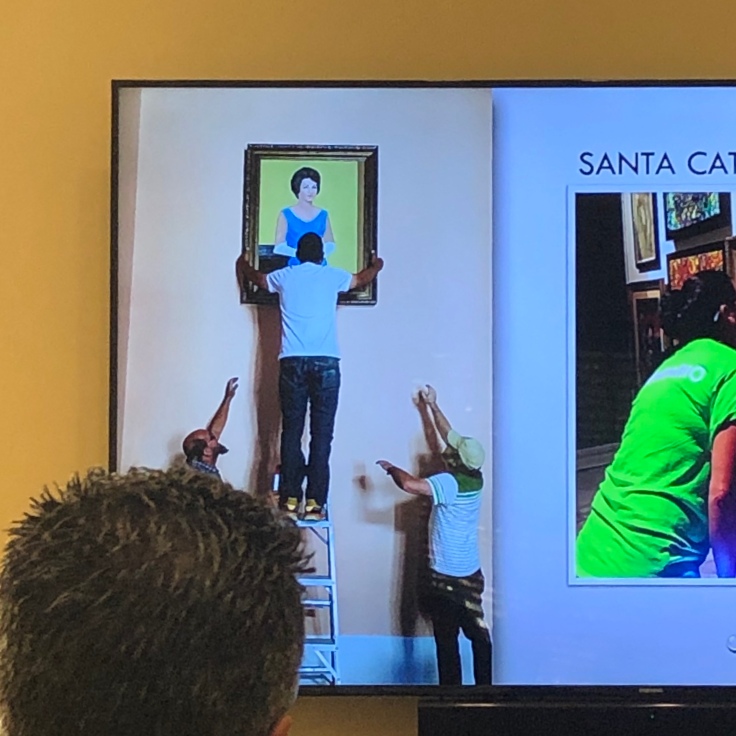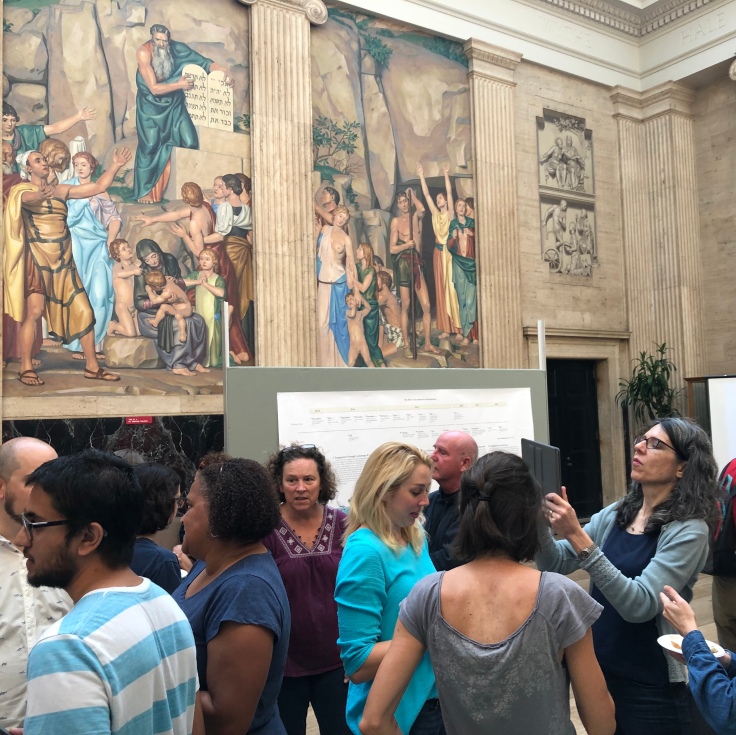Resilience and Solidarity on Display in the Puerto Rican Art Museum and Two UVa Art Exhibitions
by Kevin Stewart Rose
If I’m being honest, as a somewhat new participant in environmental humanities, I’m sometimes foggy on what we actually mean when we talk about interdisciplinary conversations around the environment. I always enjoy discussions that include colleagues from the environmental sciences and engineering, but I’m not always sure when and where those conversations can move beyond enthusiasm and moral support for one another’s work.
I’m stating that because, already within the first two days of UVa’s 10-day Convergences series, I was impressed by the kinds of deep interdisciplinary connections on display. Within the first two days—Thursday and Friday—three events took place focusing on the environmental arts in changing coastal environments. Whether rocked by intensifying hurricanes or affected by the slow burn of sea-level rise and acidification, the events showed ways in which these coastal contexts demand convergences between the environmental arts, humanities, and sciences on much deeper levels than what I’m accustomed to.

On Thursday the 19th, members of the Spanish, Italian, and Portuguese Department brought us “Coasts in Crisis,” which opened with a lunch talk from Sandra Cintrón. Though she now works at the Fralin Museum, Cintrón was a staff member at the Museo de Arte de Puerto Rico (MAPR) during Irma and Maria. Later that day, the event concluded with an exhibit opening in Ruffin Hall featuring talks from artists of the Greater Caribbean about their work in response to recent hurricanes in the region.
Professor Charlotte Rogers of the Spanish, Italian, and Portuguese Department opened the afternoon session of artist talks by calling for an expansive reading of the meteorological term, “cone of uncertainty,” proposing consideration of the intersecting devastation of U.S. colonialism and worsening hurricanes in the Greater Caribbean. While at face value as a meteorological term, “cone of uncertainty” is helpful for interpreting the path of hurricanes themselves, the arts and humanities can help us see an even more complex array of circumstances that warrant both scientific and humanistic inquiry to provide a full accounting of environmental devastation.

This interplay of cross-disciplinary language adds complexity to the ways we think about pressing environmental circumstances. And similar intersections of differing forms of knowledge can help produce resilience in light of these circumstances. In Sandra Cintrón’s experiences after Irma and Maria, which she described in the lunch session earlier that day, the hurricanes brought the MAPR’s artwork into interaction with forms of knowledge not always immediately associated with the arts.
In preparation for the hurricanes, staff created an “artworks to be rescued” listing, classifying and quantifying works of art within emergency protocols that make them quickly legible to disaster response personnel. And in the wake of the hurricanes, museum staff undertook strictly regimented scientific measurements and climate control, navigating the darkened corridors of the unlighted museum carrying headlamps, measurement devices for tracking humidity and temperature changes, and chemical interventions such as silica for maintaining a stable atmosphere. Though the whole experience was marked by significant hardship and repeated setbacks, Cintrón and her colleagues succeeded in protecting the art through their partnership with other disciplinary and professional networks.
These sessions also showed ways in which the arts—those works Cintrón helped preserve and those on display at the Coasts in Crisis exhibition—are crucial for cultivating solidarity across these networks. One Puerto Rican audience member observed that in addition to protecting the works of art, MAPR’s staff ensured that the grounds could serve as a space of stability and tranquility for the community amid the chaotic hurricane aftermath.
And among the artists who gave talks at the Coasts in Crisis art opening, the arts provide an opportunity to reflect on the social, economic, and climatic experiences of the cone of uncertainty, and to cultivate forms of community and solidarity outside of those colonial dynamics. One particularly striking example of this came from Nicole Delgado. In addition to her work as a poet, Delgado engages in handmade book publishing. In the months after Irma and Maria, Delgado and her colleagues’ use of mechanical production techniques that don’t rely on the grid was crucial for producing and circulating books of artistic and literary reflection on the hurricanes throughout the region.

And these forms of network building—the ways in which the arts can help foster the kinds of community and solidarity needed for environmental resilience—were further highlighted the next morning, on Friday the 20th, with the exhibition of The Shore Line, an interactive documentary from artist Liz Miller. With The Shore Line, Miller brings together short video pieces from 43 individuals living in coastal areas, showing their connection to one another and the possibilities of resilience and solidarity in light of climate change through dynamic maps and soundscapes that convey the interrelations between these shared experiences of the changing coast. In an engaging talk about the piece, Miller spoke with students and faculty gathered near the environmental science department, inviting their own reflection in small groups on the possibilities of resilient collaboration in the face of climate change.
Kevin Stewart Rose is a doctoral candidate in American Religious History at UVa and the graduate coordinator for Environmental Humanities.

Leave a comment